We'd slept at a gas station in Newcastle, Wyoming (news to us there was also a Newcastle here, much smaller than the one in Australia or the UK though!). Fortunately compared to other times we'd slept at a gas station, there was much less noise and the street lights weren't as bright overhead.
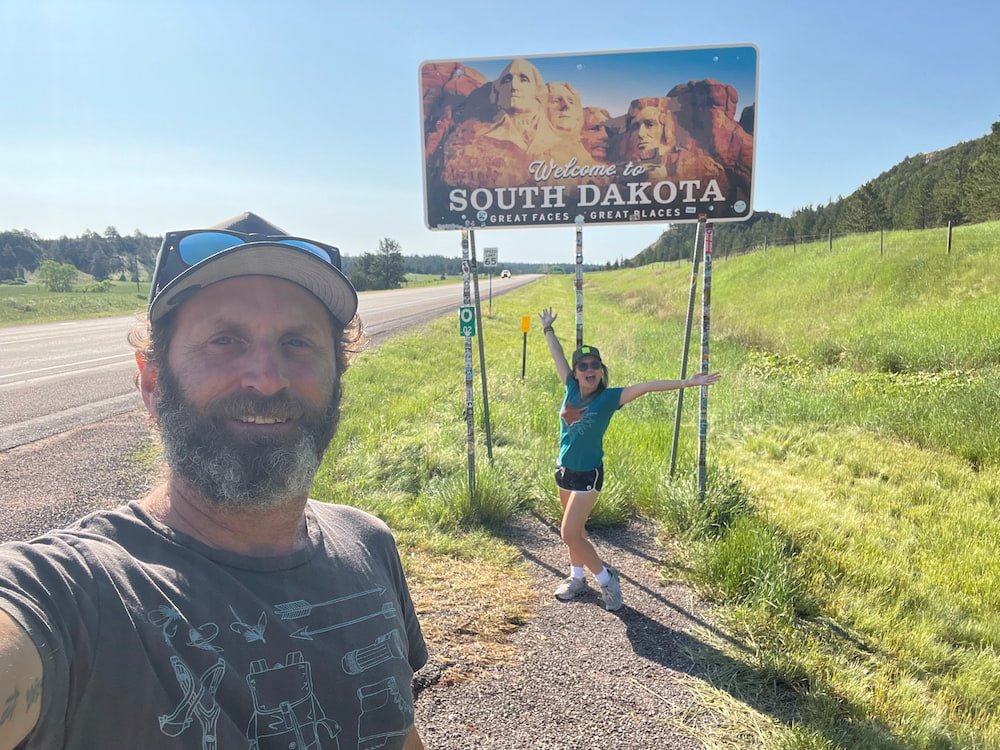
Initially our plan was to visit Custer State Park, a recreation park that's popular for hiking, cycling, fishing and other activities, but it was already shaping up to be a hot day, and we weren't as keen to go hiking. Plus one of the most scenic drives at the park, Needles Highway, is inaccessible to RVs, as they are narrow and have low clearance.
Surprisingly, we had not seen bighorn sheep throughout any of the parks so far, however, on our way past Custer State Park, we spotted some along the side of the road!
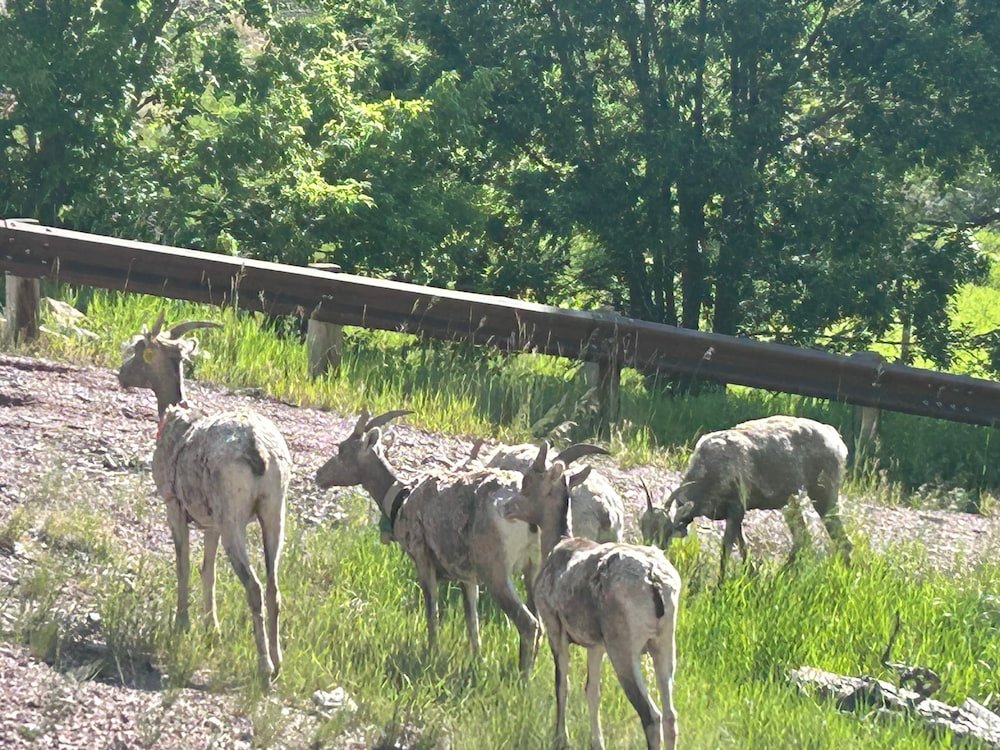
Crazy Horse Memorial
Instead, we went straight to Crazy Horse Memorial, a monument that started being built in 1948 and is still under construction! When it's finished, it'll be of the Oglala Lakota warrior Crazy Horse, riding a horse and pointing to his tribal land. The plan is that the sculpture will be 172 meters (563 feet) tall, and 195 meters (641 feet) long The sculpture's final dimensions are planned to be 641 feet (195 m) long and 563 feet (172 m) high. Crazy Horse's face was finished in 1998, but his headdress, hand, and the horse are far from complete.
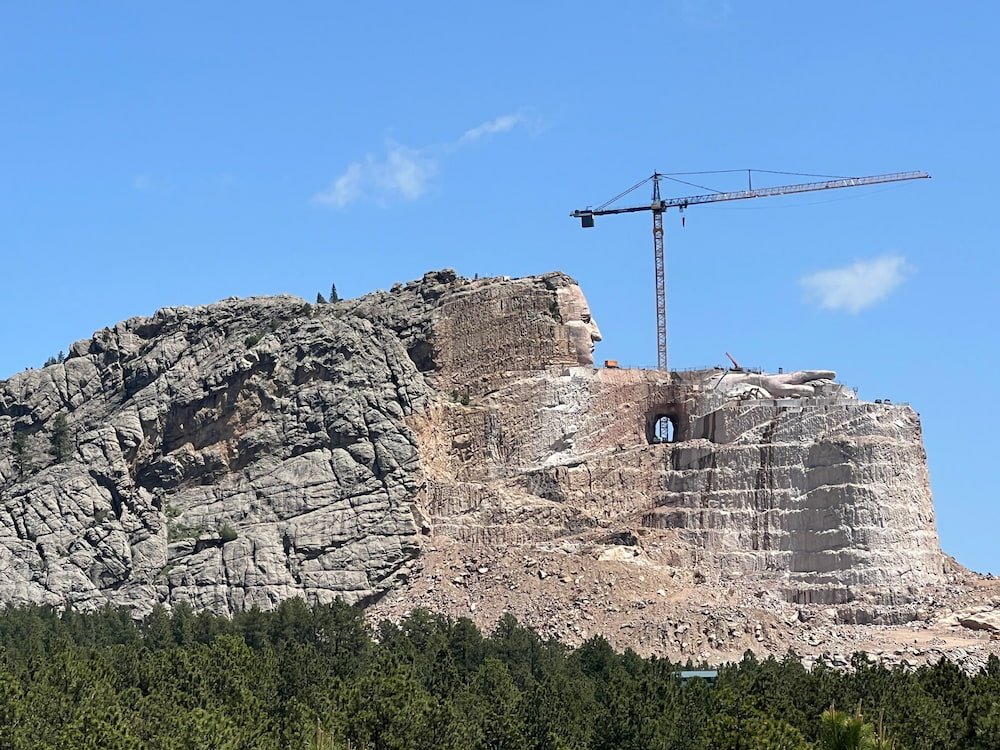
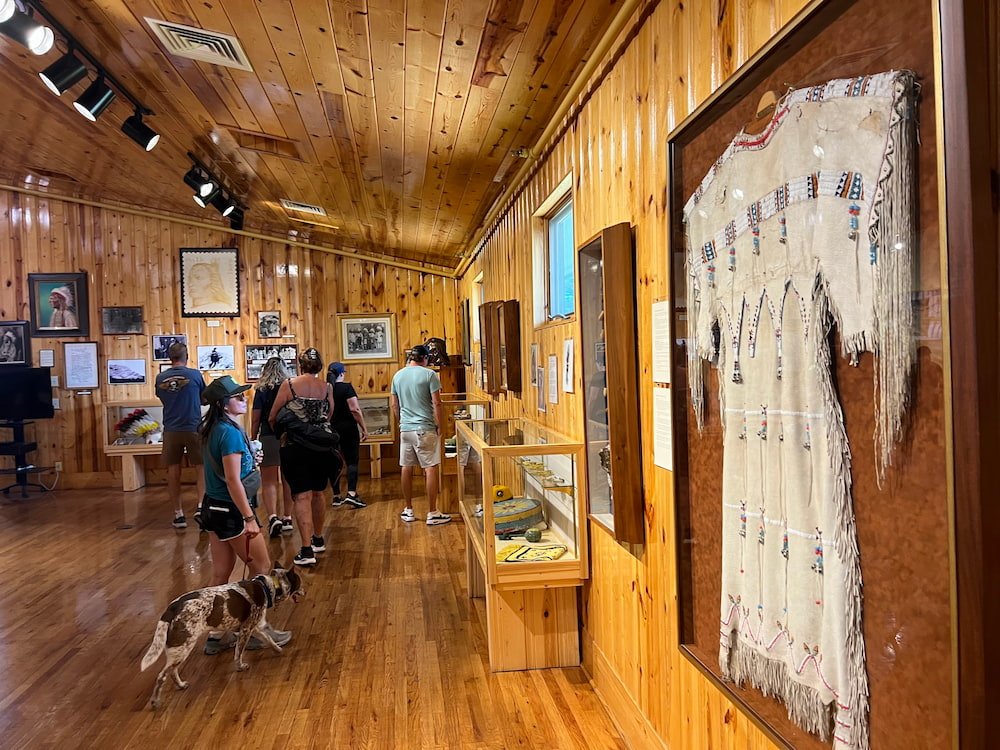
The memorial was commissioned by the Lakota elder Henry Standing Bear, and sculpted by Korczak Ziolkowski, a Bostonian man of Polish descent. Korczak worked alone on the sculpture for the first 9 days, and after his death, work is being continued by a group of people, including his grandchildren. The Crazy Horse Memorial is operated as a nonprofit, so funding is from donations and from entrance fees (admission is based on how many people are in a vehicle, so we paid $30 for two people in the RV).
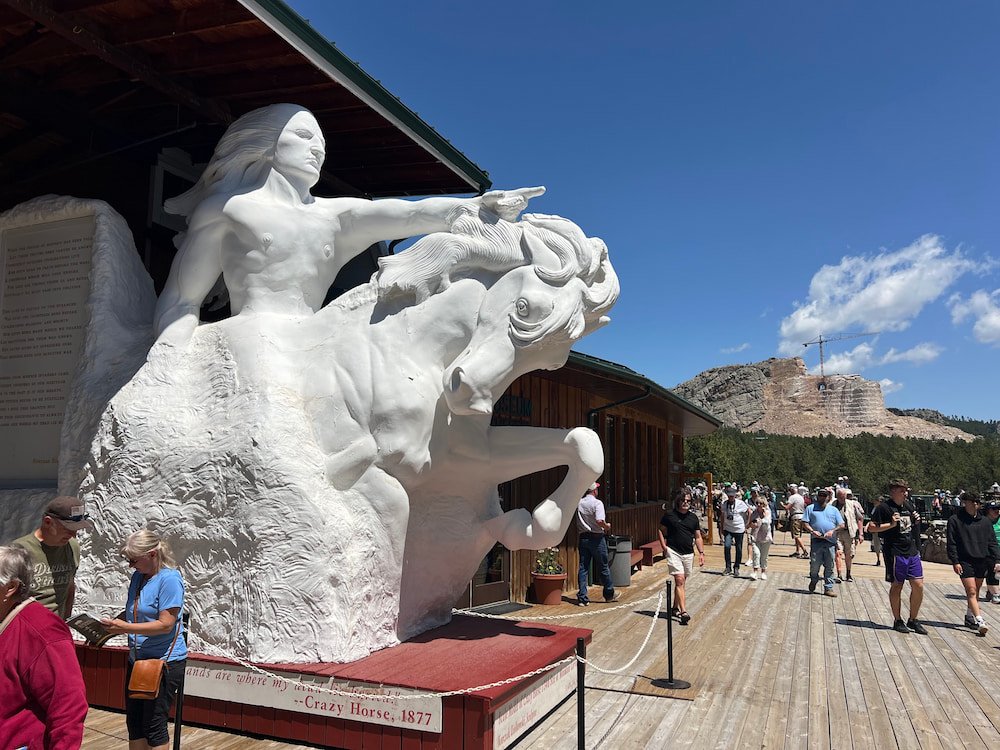
Because the monument is still under construction people can see it from about over 910 meters (3,000 feet) away in the parking lot (which we did), or you can pay $5 to take a bus further up, but can still only see it from about over 300 meters (1,000 feet) away.
We thought that we wouldn't spend that long at Crazy Horse Memorial, but it has a ton of interesting exhibits around it, including the Indian Museum of North America, which has Native American art and artifacts from over 300 tribal nations. Then Native American Cultural Center is two levels where visitors can meet an artist, and learn about the history of the American bison. Sadly, bison were almost completely eradicated, as the government used this as a strategic way to remove Native Americans from their lands. There's also a restaurant, huge gift shop, and exhibits about Korczak Ziolkowski and his family.

One of the highlights for Lisette was seeing the Native American dance performance (it's on 3 times a day). A Native American woman and her daughter performed the Jingle Dress Dance in both the more traditional and modern styles, and talked about their clothing, culture, and shared a positive message about bringing people together from all walks of life together, to respect and live in harmony, at the end the presentation. A message that's very much needed today!
Mount Rushmore
Mount Rushmore National Memorial is a massive sculpture of 4 former US presidents: George Washington, Thomas Jefferson, Theodore Roosevelt and Abraham Lincoln, standing at about 18 meters (60 feet). The presidents were chosen by the sculptor, Gutzon Borglum, to represent a key aspect of growth and identity in the US. Washington symbolized the birth of the nation, Jefferson the expansion of the country (most notably the Louisiana Purchase that doubled the size of the US), Lincoln the preservation of the nation during the Civil War, and Roosevelt the development of the nation.
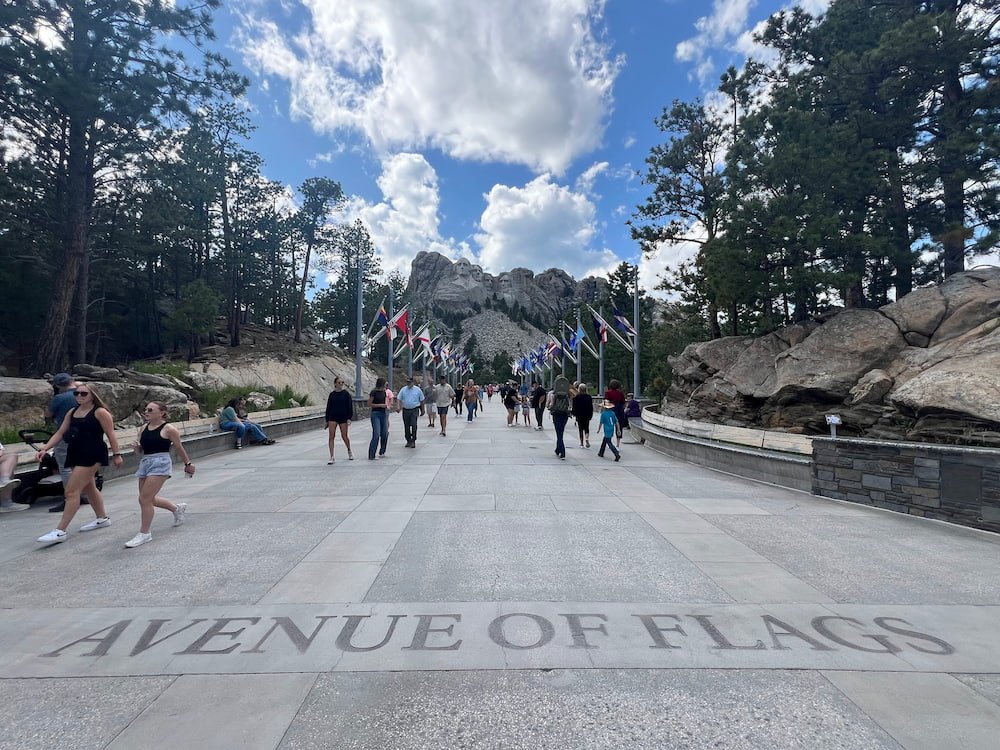
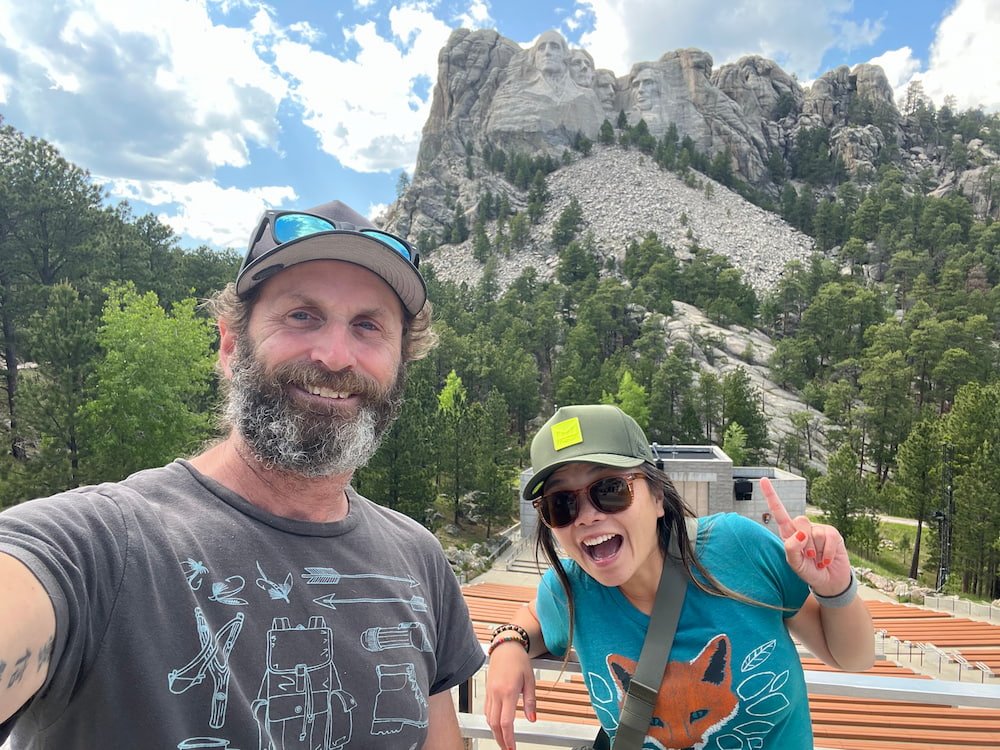
Initially the belief was that construction would take several years and cost $500,000, but it took 14 years, wrapping up in 1941 and costing almost $990,000, which would be about $20 million in today's dollars! There were a number of challenges that extended the timeline, including lack of funds (construction happened amid The Great Depression), weather and seasonal limitations, and design changes (for example, the presidents had to be moved around in terms of where they were placed and which way they would face based to work with the rock).
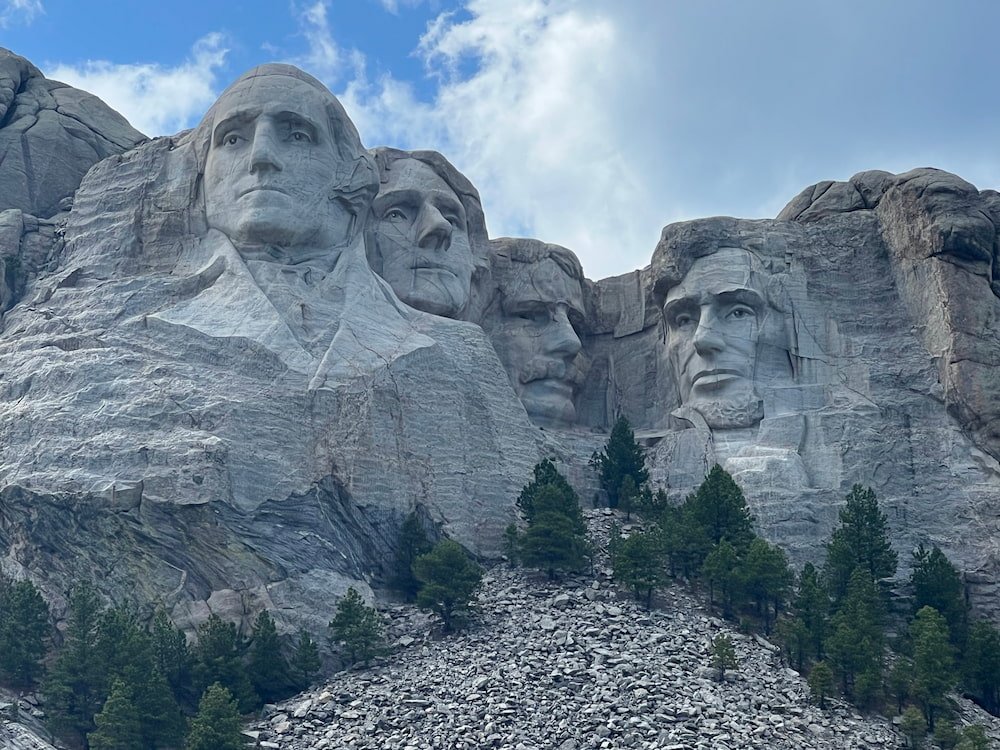
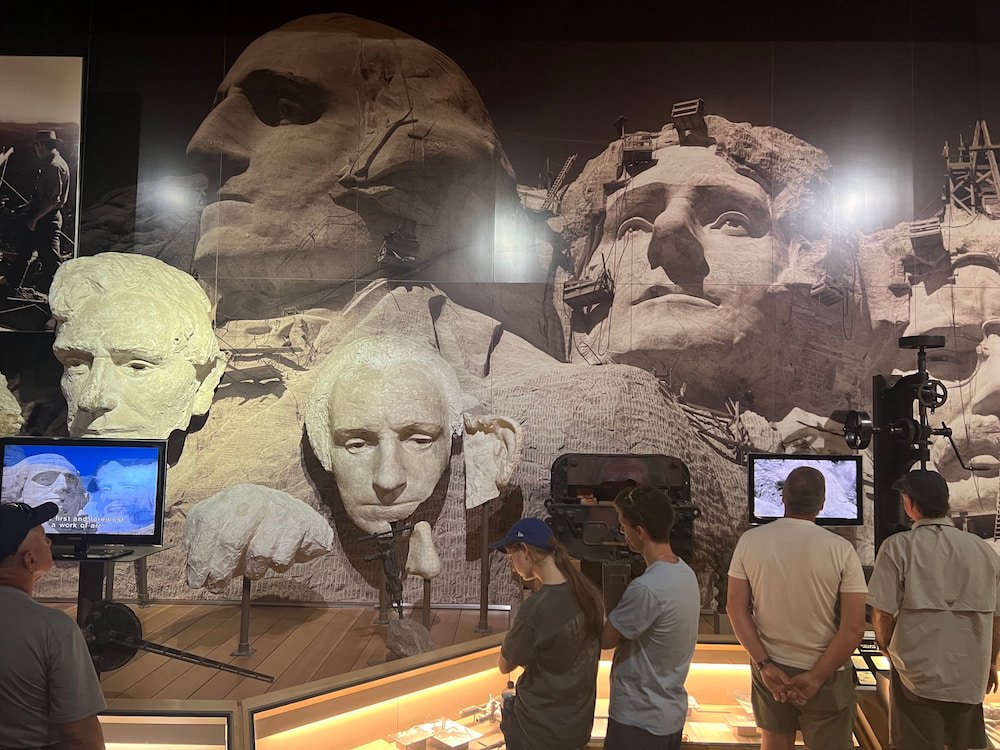
The idea behind this memorial was to draw tourism to the area, and it definitely worked--there were a ton of other visitors when we went, with staff acting as traffic controllers to guide people to parking spots. There's an interesting museum there that details the construction of Mount Rushmore, an Avenue of Flags leading up to the Memorial that have all the 50 states, territories, commonwealths and district (Washington DC) that make up the US, and a trail around the Memorial as well.
Wooden Bigfoot and Wooden Norwegian Church
Not far from Mount Rushmore, we found the World's Largest Bigfoot carved from ponderosa pine, cedar and cottonwood using chainsaws! There are two brothers that run Dahls Chainsaw Art, where they carve all sorts of items--from furniture to eagles and even the Minions characters--from wood, using chainsaws, which people can purchase. We saw them at work, chainsaws loudly cranking, as they hacked at the wood to make it into the next impressive structure.
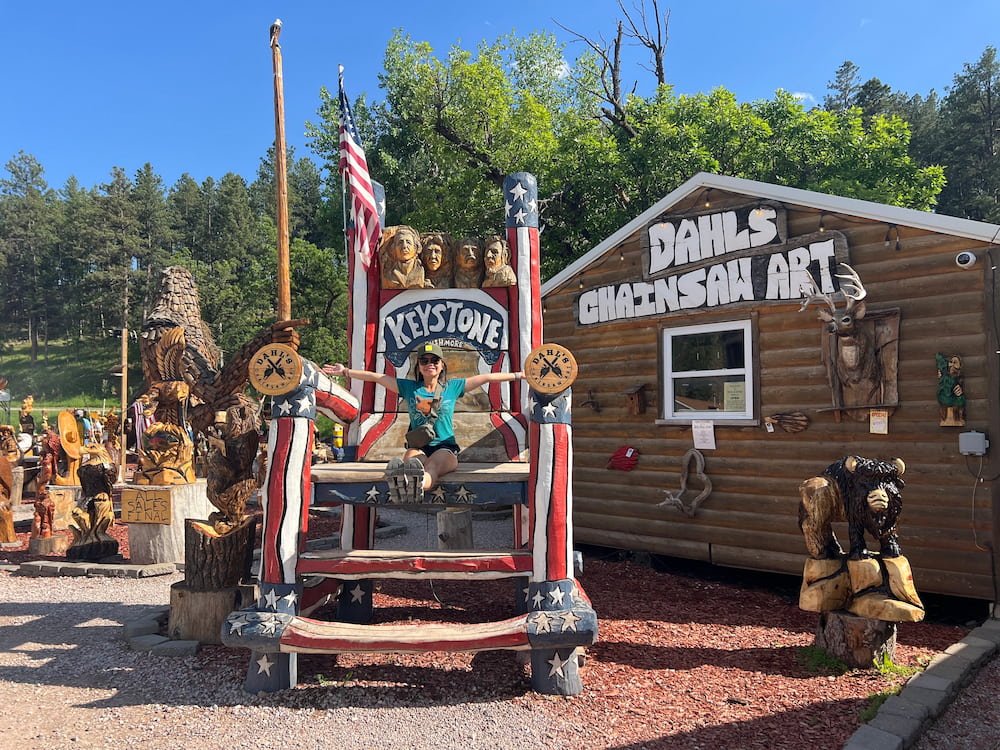

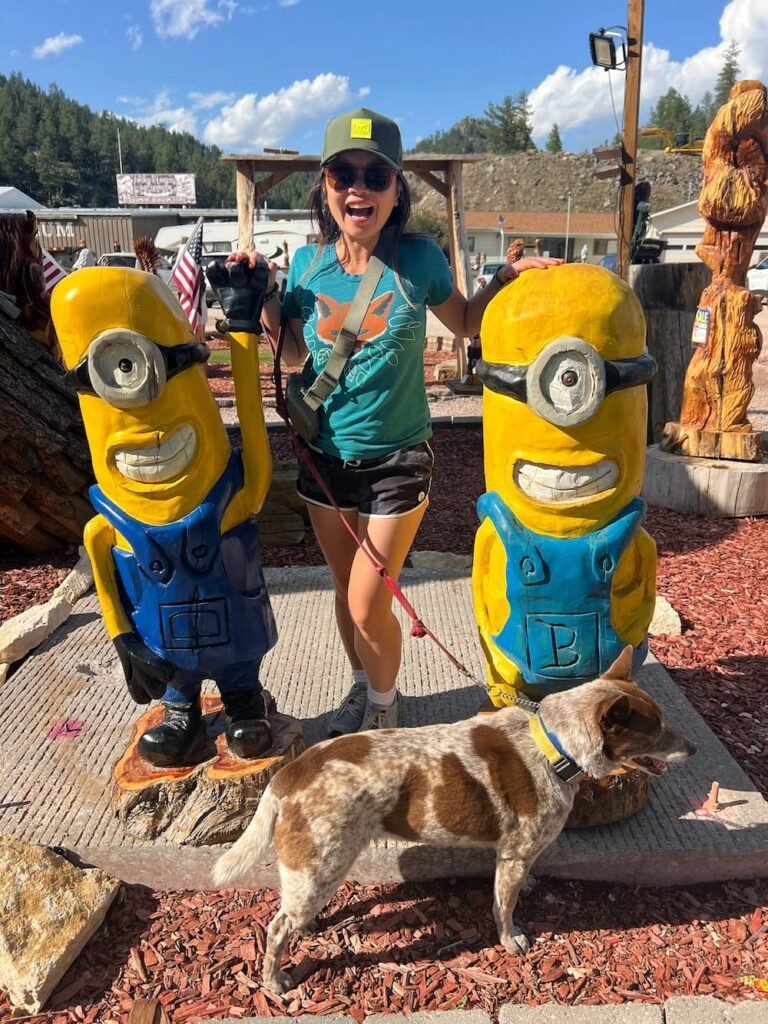
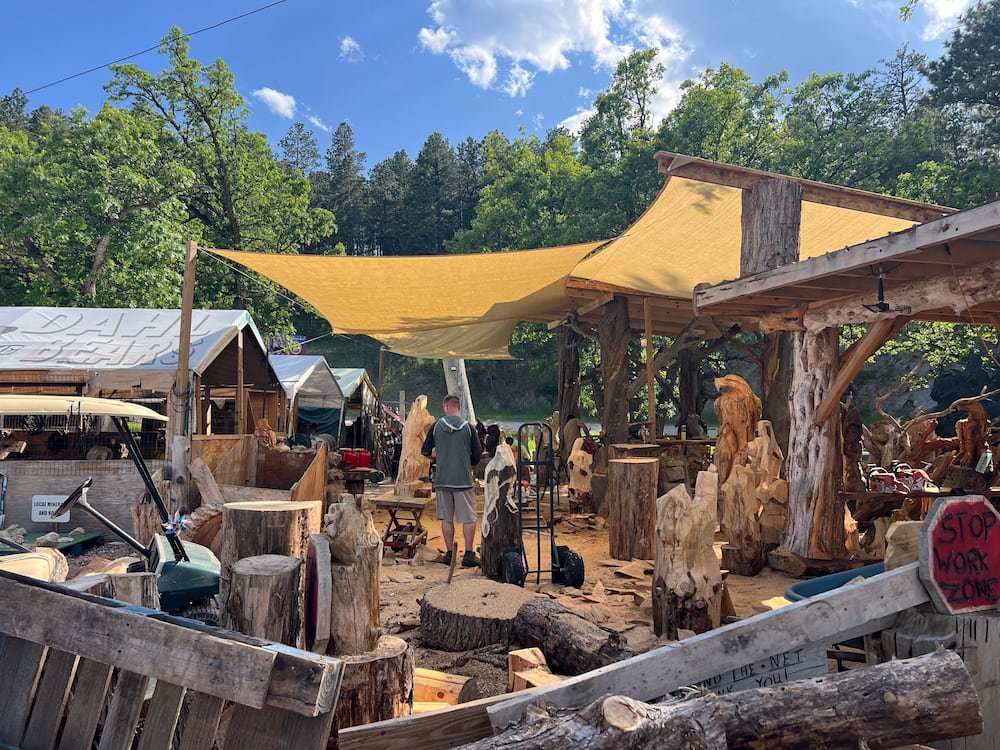
There's a lot of influence that we've already seen on our travels (like Poulsbo, which is Little Norway, or Leavenworth, which looks like a Bavarian village). Now, we were back to Norway with Chapel in the Hills, an exact replica of the Borgund stave church in Norway. The original was built around the year 1150 and is considered the most completely preserved stave church still standing in Norway. There was apparently a wedding happening when we went there (although everyone was dressed very casually, and we weren't sure if we saw the bride and groom, nobody was dressed like they were getting married). Today, it's still used as an Evangelical Lutheran Church in America.
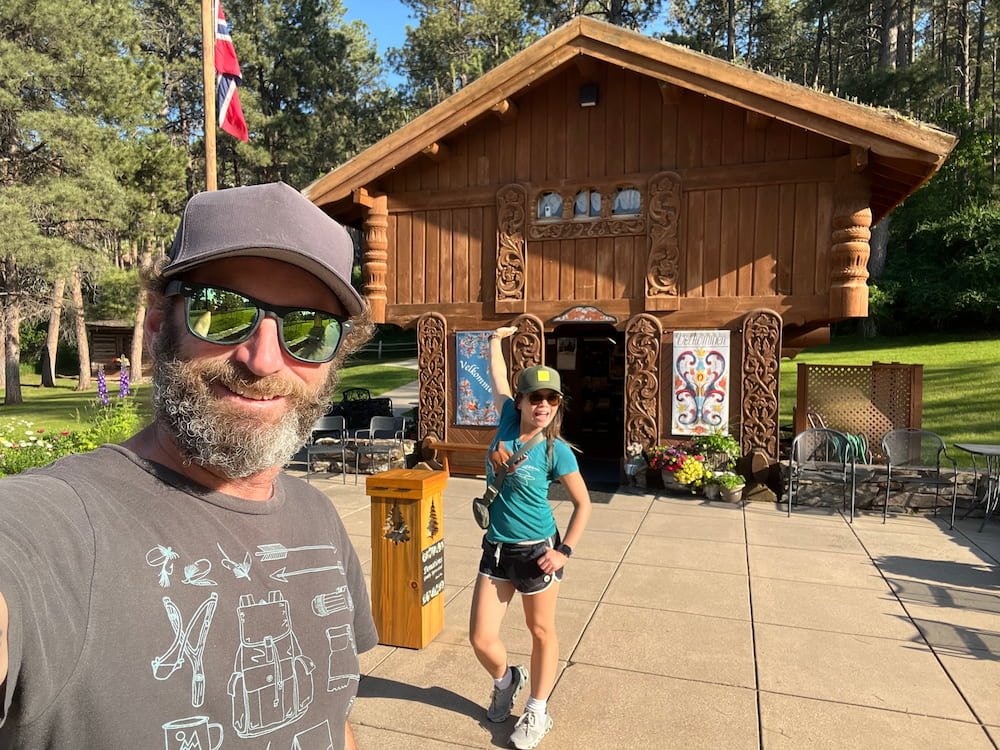
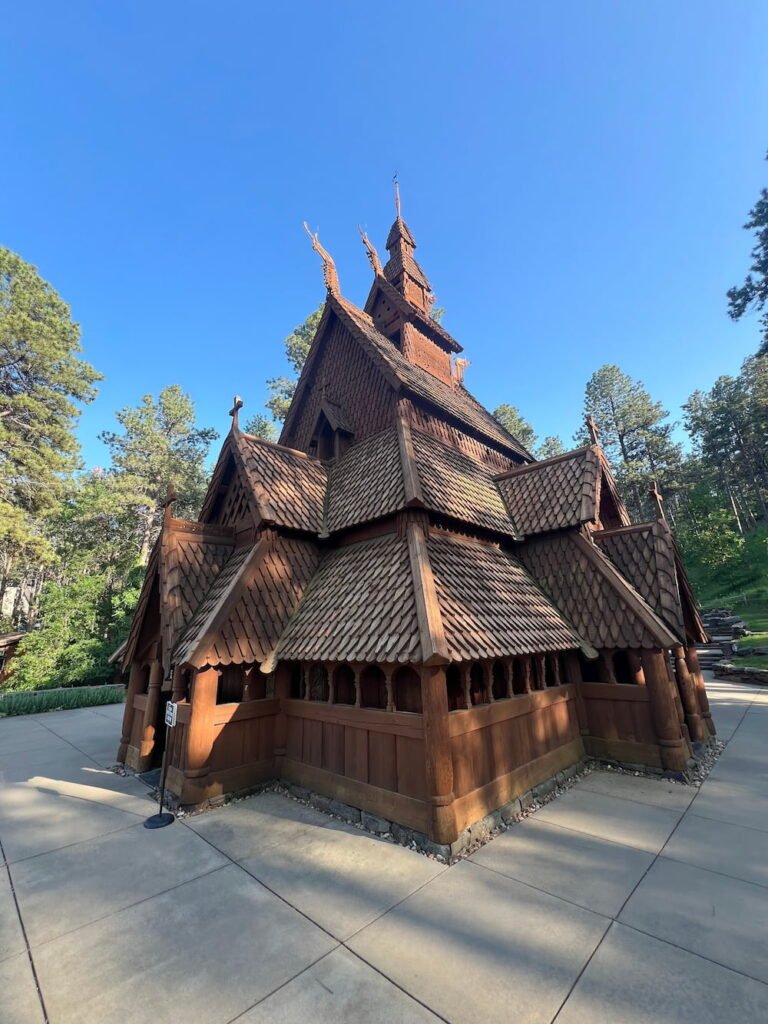
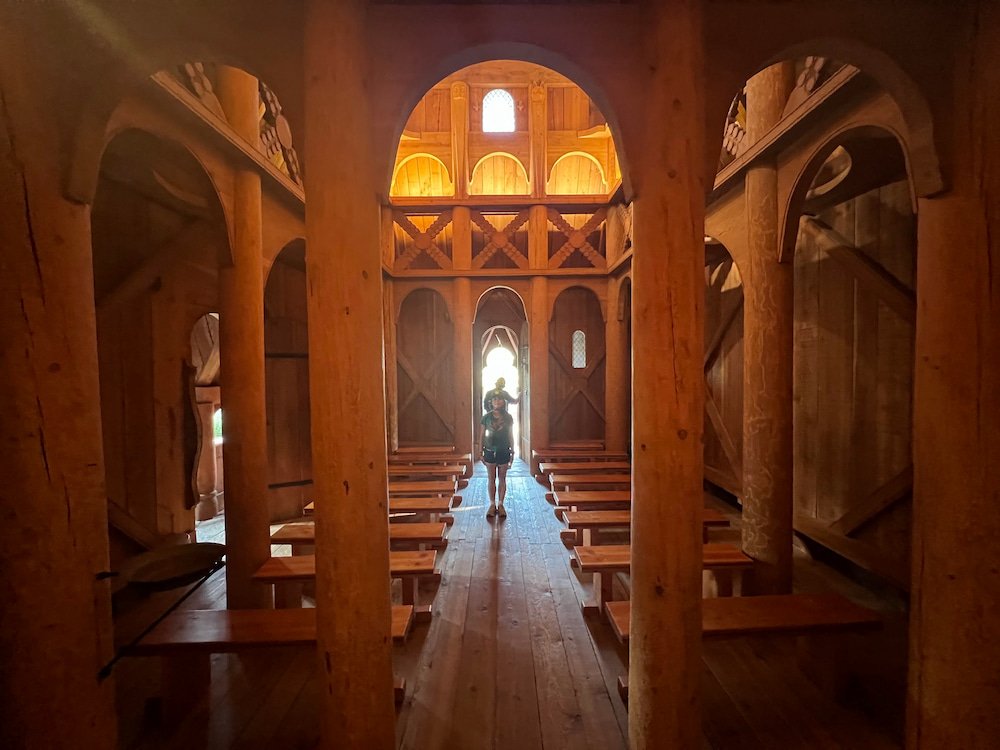
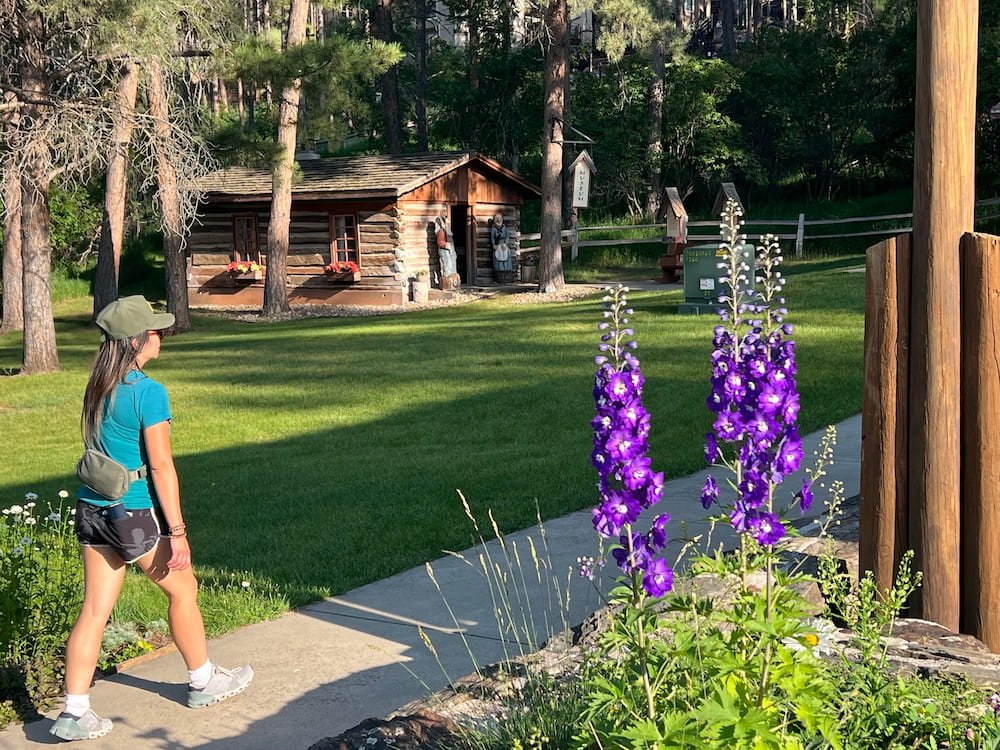

The church is a very striking building, made of dark brown wood and with several layers of roof shingles reminiscent of dragon scales, and with dragon accents reminiscent of Viking ships. Inside the church the design is simpler but elegant, with wooden pillars reaching up to the ceiling, and wooden pews facing the front where the pastor would likely stand behind the marble altar. There's a museum and gift shop (which includes Scandinavian cookbooks, food and other souvenirs) on the grounds, as well as trail that people can walk around, with different religious sculptures and messages along the way.
Depression Era Dinosaur Park
We arrived in Rapid City, the second-largest city in South Dakota, in the evening. It had been a hot day, so there were a lot of people visiting Dinosaur Park, which is on a hill overlooking the city, providing everyone with a beautiful view of the sunset. The park was built in the 1930s, during the Great Depression, and there are 7 different dinosaur sculptures there, with a bit of background about each dinosaur. There's not much else beyond the dinosaurs, but it is a great spot for families to come and hang out and look down at the city.
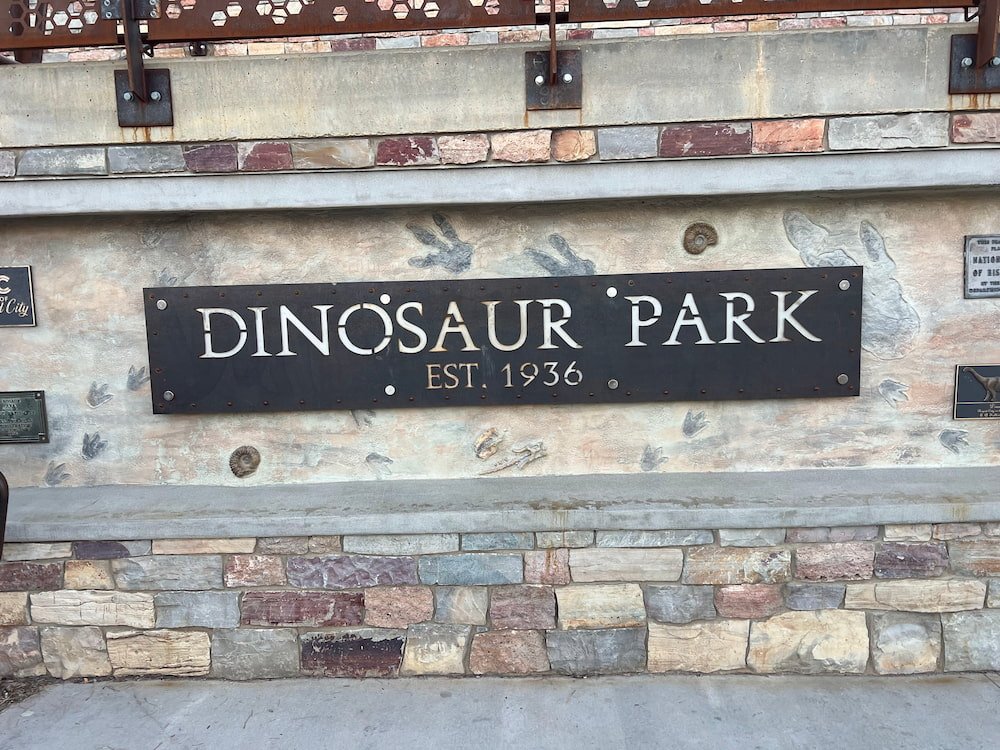
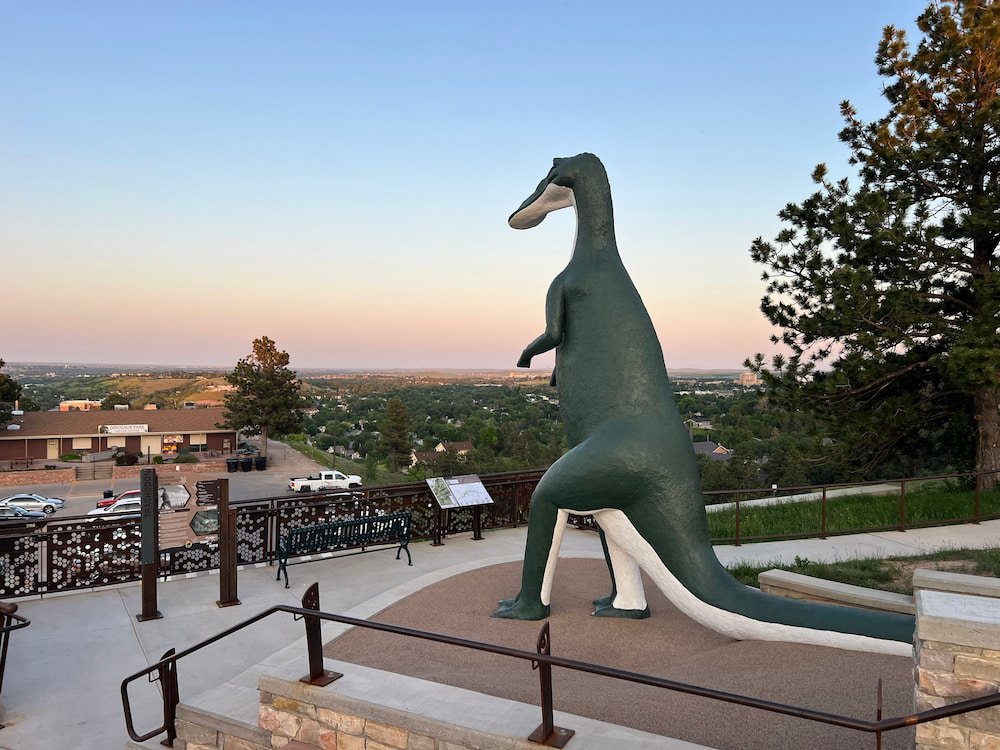
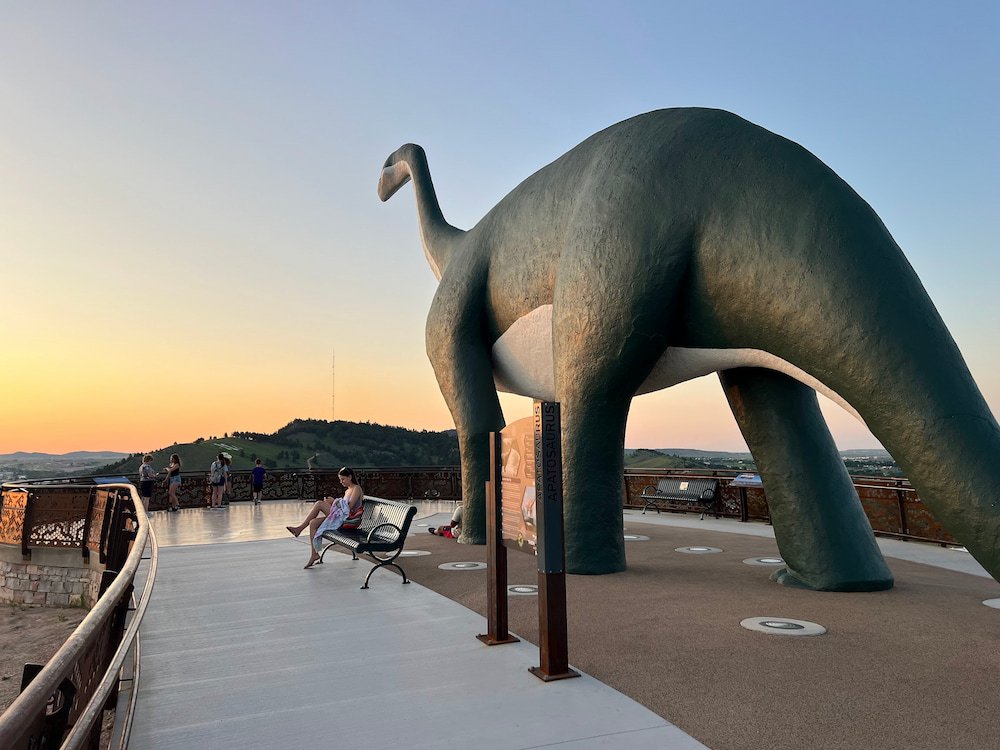
Heading up the windy road we'd seen a pullout that would have been an incredible place to park and stop for the night (and see the city view the following morning), but it had a couple of deep puddles that we didn't want to inadvertently get stuck in, so we slept at the next best place: a parking lot near a Wendy's fast food restaurant! But at least it was flat and we'd be ready to go the next morning. Sheila was still not 100% from her hot springs run-in, so her evening walk was long and probably felt even longer because after sunset there were so many mosquitoes out, with some making it into the RV. Mosquitoes is one of the biggest downsides to hot summers!
Route Map
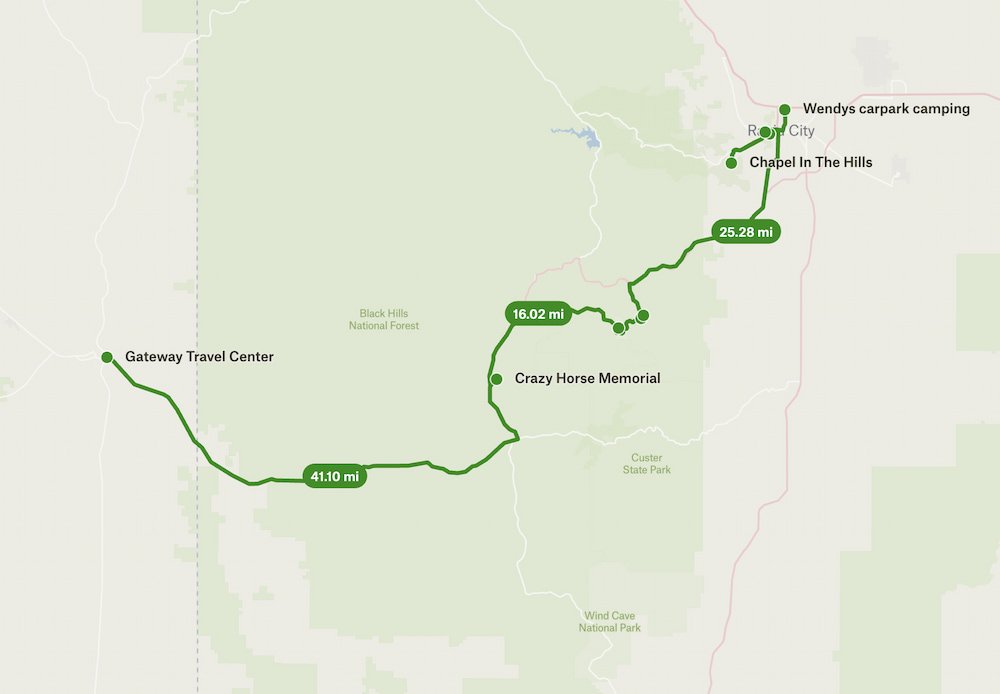

[…] visited Mount Rushmore in South Dakota, and it turns out that Houston has its own version, called the American Statesmanship Park, which […]